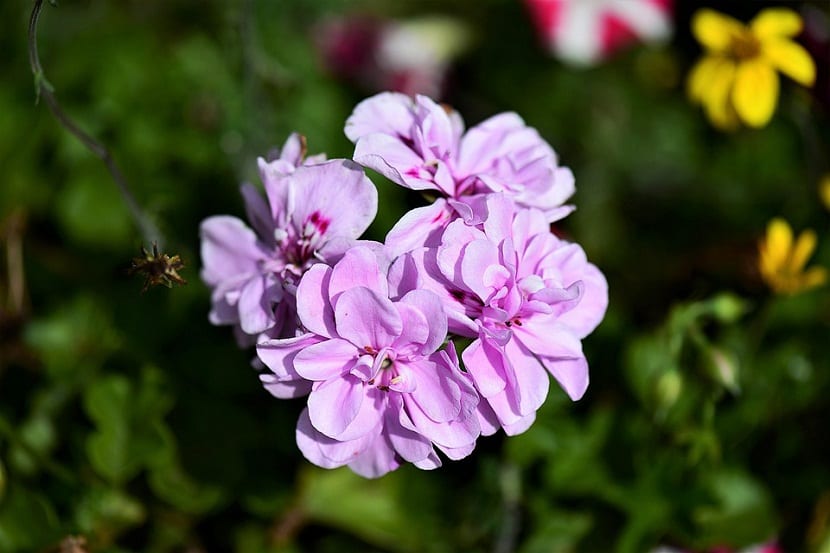
When we refer to Begonias, we are talking about some 1.000 species plant family Begoniaceae, many of them with colored flowers and leaves and used as potted plants in the interior space or as plants in the garden. Begonias belong to the tropics and sub-tropics and their most peculiar characteristic is the four shades of colors that it has, especially in its petals, being the colors of the flower are pink, red, yellow or white.
The Begonia belongs as we have said previously to the family Begoniaceae and the only other member of the Begoniaceae family is the hillebrandia, a genus of a single species that grows on the Hawaiian Islands.
There are many varieties and forms

When we think of varieties, we are referring to 10.000 plants grown and registered, being the majority of hybrid origin.
They present an incredible variety of forms and these varieties must be included in three large groups which are: fibrous and rooted, rhizomatous and tuberous and rooted.
Begonias are usually seen more frequently during the summer time, in addition, features various types of stems, the so-called cane shoots, characterized by their tall stems and the hairy begonias that have leaves similar to the skin of a feline.
Most begonias are tender plants, that is, intolerant of dry conditions and that require protection from strong sunlight.
Some important characteristics of begonia
In the case of begonia, its flowers are very showy and large and in the four colors that we had already mentioned (white, pink, scarlet or yellow).
They are monoecious, that is, with unisexual male and female flowers that are separately on the same plant. The male is distinguished by having numerous stamens, the female having a large lower ovary and between two and four branched stigmas. With the passage of time, the Begonia it has been an experimental plant submitted to create innumerable hybrids and variations and due to the large number of interesting shapes, begonias are an object of worship by collectors.
For this reason, the group of begonias is one of the largest groups of ornamental plants cultivated in history. Many of the begonias are grown primarily for their foliage and others for an eye-catching bloom.
The begonia fruit is a dry and volatile capsule that begins to divide longitudinally to release the seeds. Among these varieties, the Tuberous begonia it is very popular all over the world for being a plant ideal for houses and also as a plant that grows well in greenhouses.
In this sense, pruning has to be done in such a way that you have the opportunity to have a new growth during the spring time. The plant was first found in Costa Rica and was later prepared for commercial cultivation.
Begonia properties
There are many types of begonias that exist, among which are tuberous begonias (these are large-flowered), semperflorens begonias (or wax type), rex begonias and rhizomatus begonias (interesting leaves and flowers).
There are basically three types of Begonias: tuberous, Semperflorens and evergreen and it should be noted that Semperflorens is by far the most common variety, including fibrous begonias, wax begonias and everblooming begonias and as a curiosity we can say that all flowers have a bright yellow eye in their center. Regardless of the variety, they grow with compact foliage, dense and will grow about 13 cm long.
Some important information for your selection and care

Begonias grow best in light, well-drained soil, so it is best to plant them in large pots or in that case you have to enrich the soil with vitamins. One way to enrich the soil is by placing and burying oak leaves or other humus on the ground, this will work wonders.
There are also good commercial mixes They come in containers and you just have to throw them in the ground, so when you go to plant your begonias, make sure to water them as soon as possible, in the meantime put them in the shade until you can plant them, (Not more than a day or two!) And then plant them at the same depth that they were growing.
Once you've planted them, water again. After that, you should water your begonias as soon as the soil feels dry to the touch, begonias don't like to be over watered.
In relation to Begonias careIts multi-colored leaves grow from a rhizome and this rhizome works well as a house plant. Among some cares that you should take into account, we will mention:
- They must always receive bright light through a window and water only when the ground is dry.
- Also, try to plant them in wide and shallow pots.